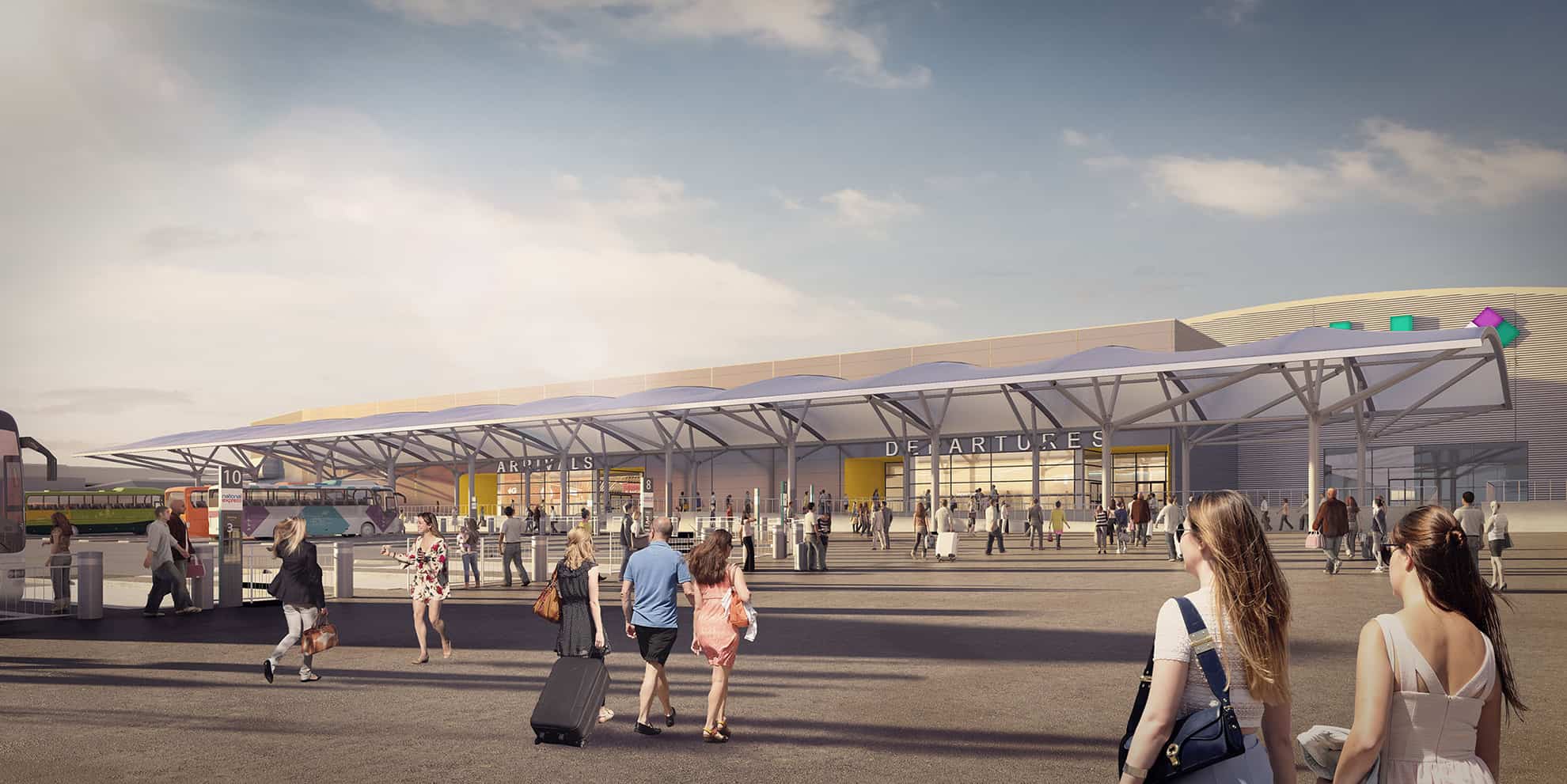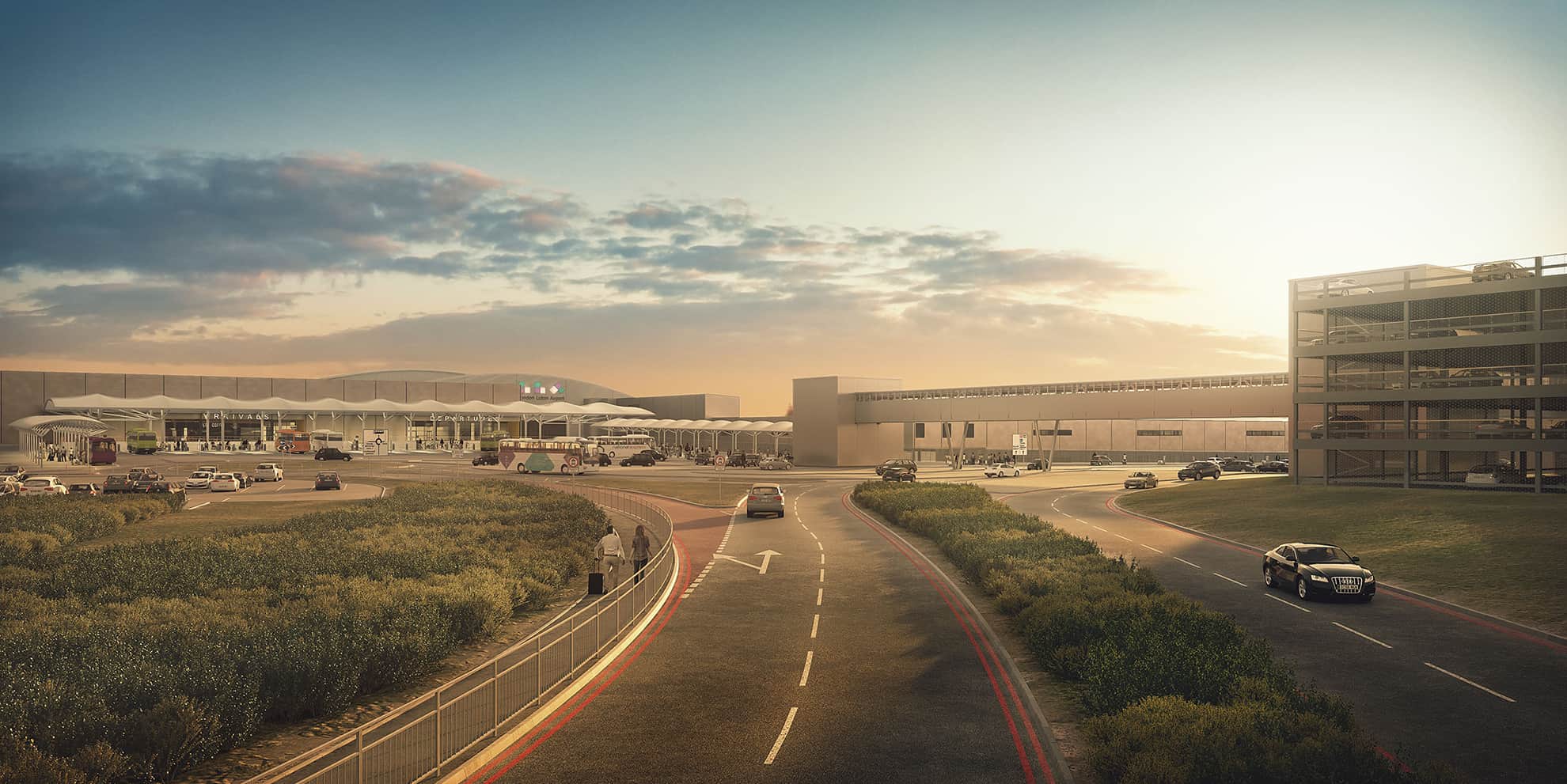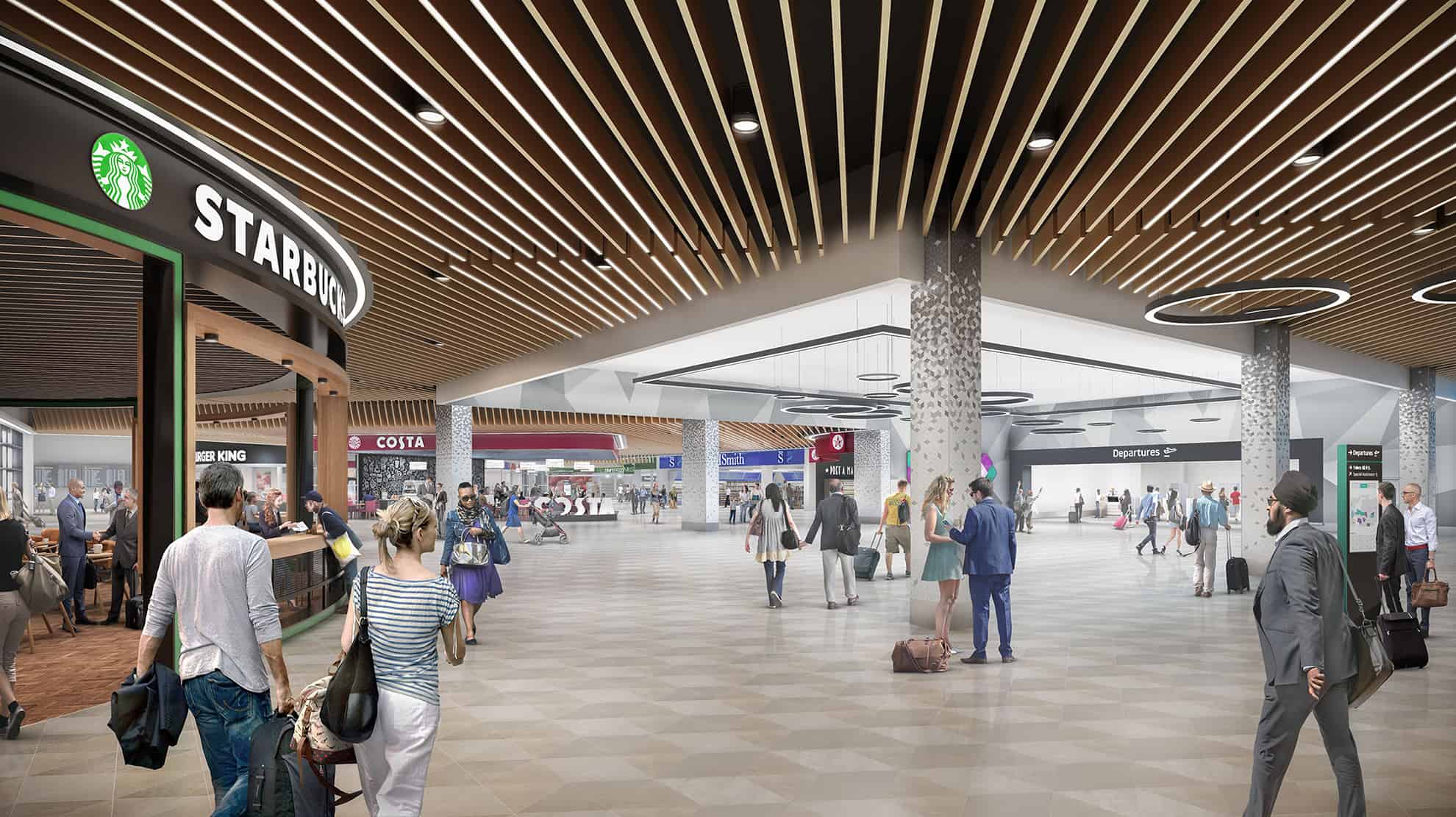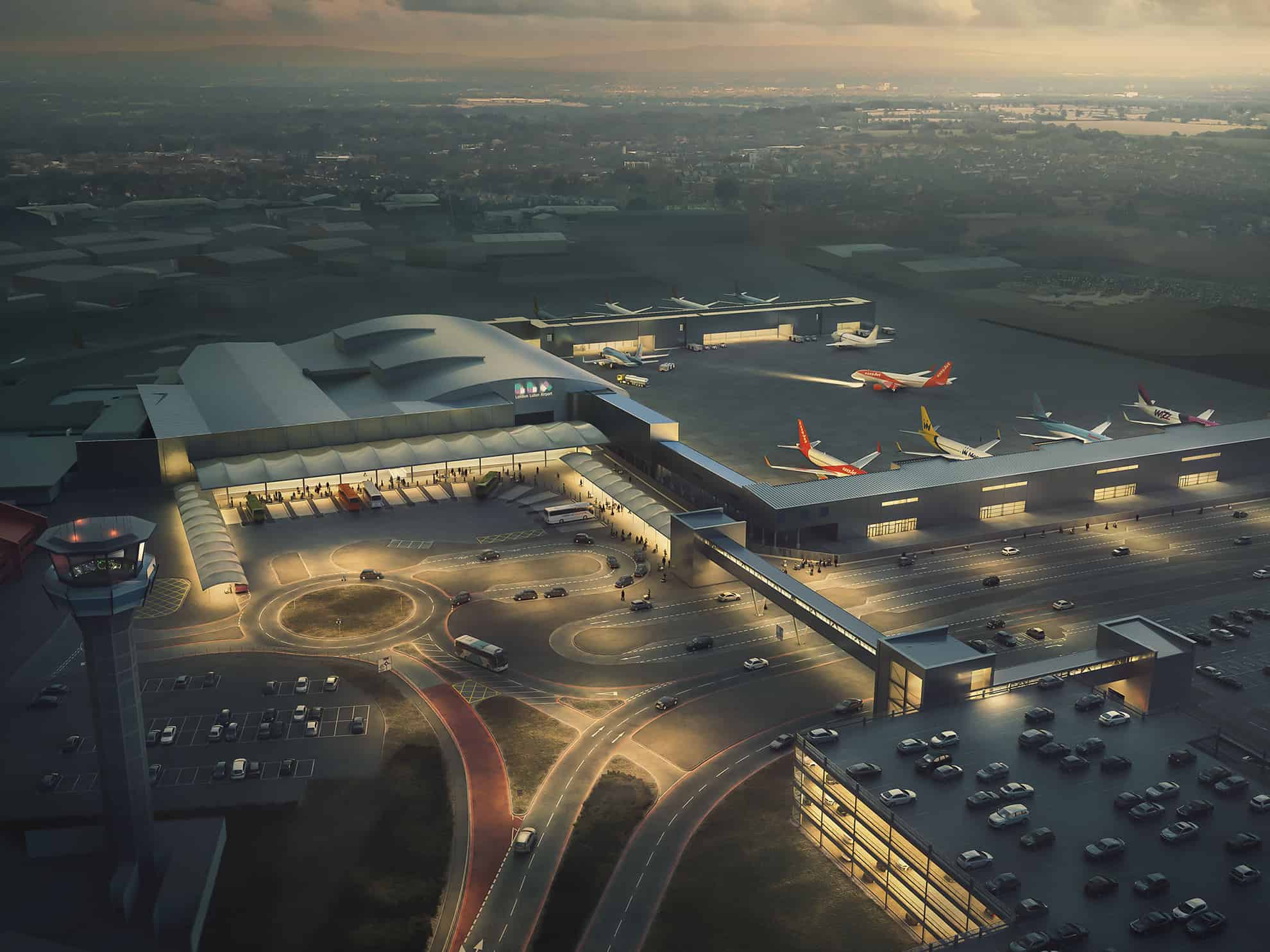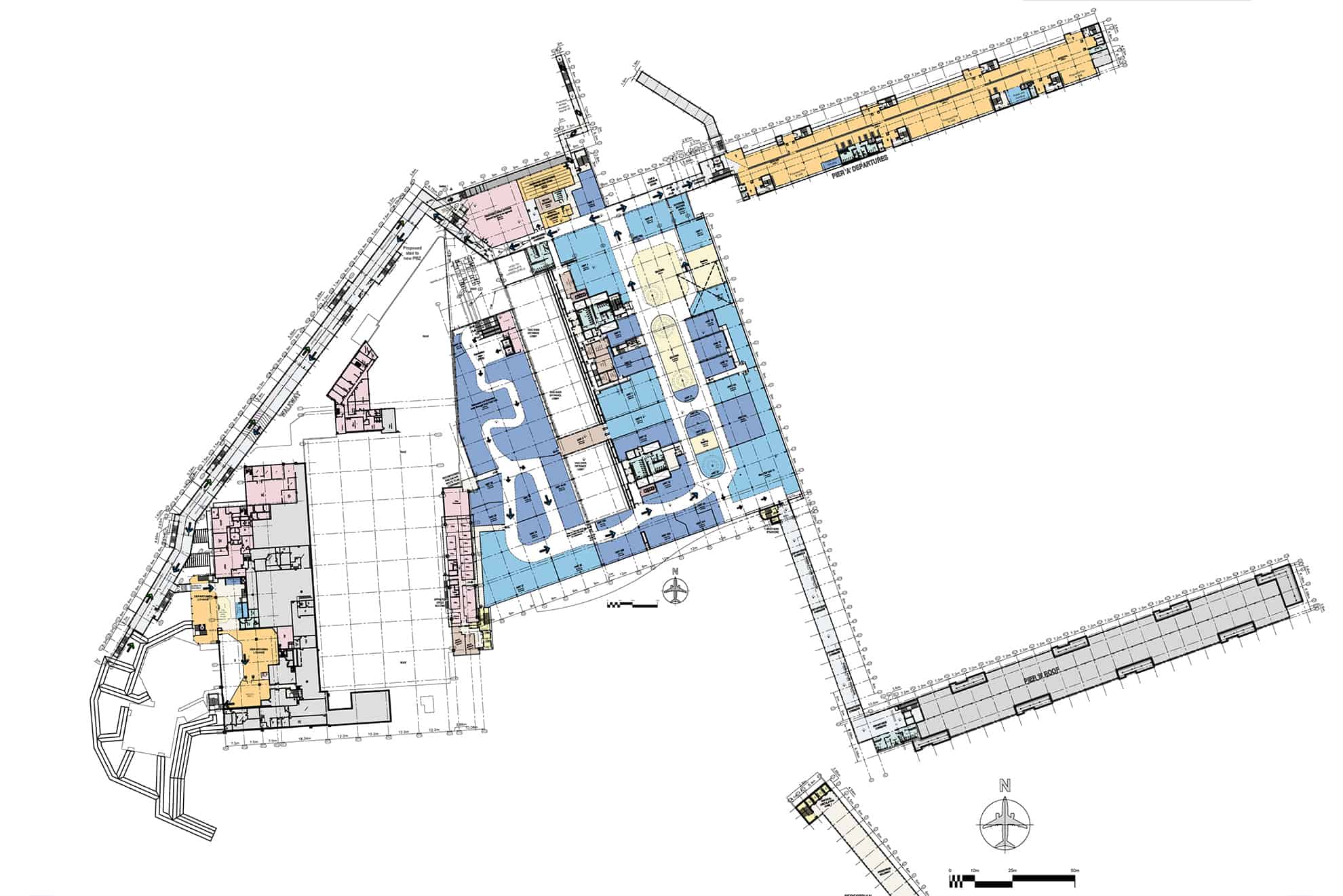London Luton Airport
This was a major project to extend and reconfigure the terminal buildings and airfield to increase capacity from 10mppa to 18mppa. The project was challenging as it had extremely tight budget and time constraints and included the need to alter the proposed designs from a 16mppa terminal to 18mppa after negotiations with the local council. Detailed capacity calculations were prepared to examine each operational sub-system and maximise throughput based on the space available.
The proposed works included:
- – New arrivals concourse.
- – Extension & reconfiguration of retail concourse including a new walk-through duty free & additional retail units.
- – Relocation and extension of the passenger screening facility from first floor to ground floor including extended search lane lengths with automatic tray return to improve processing times.
- – New and refurbished baggage halls.
- – New pier to provide eight gates and associated contact and bussing stands.
- – Infill extensions and alterations to the existing pier.
- – Expanded Immigration Hall, installation of eGates & relocation of Border Force offices.
- – New external concourse to link the ground transportation zone to the terminal.
Details
TODD Architects were lead consultant on the Master Planning of the aerodrome and assisted in the submission of a major planning application. The detailed design was carried out by other parties, TODD Architects were able to bring their specialist experience to the D&B tender stage and assisted McL&H in a value engineering exercise to bring the tender figure within the client’s budget as well as assisting in phasing of the works to ensure the ‘live’ environment was maintained throughout the whole project. The works were extensive and included a number of landside / airside interfaces. Many of the airport subsystems were expanded and improved to maximise passenger throughput and enhance passenger experience. This required a thorough knowledge of the varied airport facilities, excellent relationships with the airport management and stakeholders, a continuous analysis of phasing and a further key consideration was retaining secure environments due to the repositioning of the airside/landside as required by the phasing of the multiple sub system developments.
 close
close
